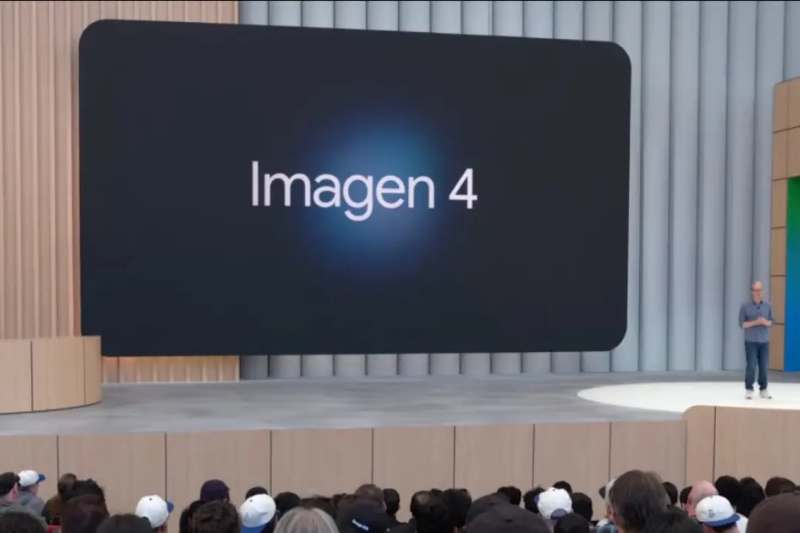
In a significant leap forward for generative AI, Google has officially launched Imagen 4, its latest and most advanced text-to-image model. This groundbreaking release, first unveiled at Google I/O 2025, is now available in a paid preview, offering developers and creators unprecedented control, quality, and realism. Ultimately, this new model promises to redefine how we transform text into stunning visuals.
A New Era of Image Generation is Here
First and foremost, Imagen 4 is not just an incremental update; on the contrary, it represents a substantial upgrade over its predecessor, Imagen 3. As a result, the model brings a host of new capabilities and refinements. In essence, it's a game-changer for digital artists, marketers, and developers. Furthermore, this launch solidifies Google's position at the forefront of the generative AI race, alongside competitors like Midjourney and DALL-E.
Unpacking the Key Features of Imagen 4
To begin with, the most remarkable improvement is the model's ability to render text and typography with remarkable accuracy. Previously, AI image generators struggled with spelling, often producing garbled or nonsensical words. Now, however, Imagen 4 excels at embedding clear, legible text within images, making it an invaluable tool for creating posters, postcards, product mockups, and comic book panels. In fact, user examples have shown its incredible precision in following complex prompts that include specific text.
In addition to that, Imagen 4 boasts an unparalleled level of photorealism and detail. Specifically, it can render intricate textures like fabric, water droplets, animal fur, and reflections with stunning clarity. Consequently, images generated by the model feel tangibly real, almost like photographs. Similarly, it handles fine details in close-up shots with richer colors and gradients, creating a truly immersive aesthetic.
Another key feature is its resolution and style versatility. For example, the model now supports outputs up to 2K resolution, a significant jump in quality. Furthermore, it can master a wide range of artistic styles, from cinematic and surreal to illustrative and photorealistic, all with greater fidelity. Therefore, creators can use a single model to produce a diverse portfolio of visuals.
Beyond that, Google is introducing a family of Imagen 4 models to cater to different needs:
Imagen 4: The flagship model, designed for a wide range of tasks with improved quality and speed.
Imagen 4 Ultra: A premium version designed for superior prompt adherence. In other words, if you need your image to precisely follow every detail of your prompt, this is the model for you.
Imagen 4 Fast: A forthcoming variant that promises up to 10x faster generation speeds than Imagen 3, making it ideal for rapid prototyping and ideation.
Pricing and Availability: How to Get Started
At present, Imagen 4 is available in a paid preview through the Gemini API and for limited free testing in Google AI Studio. Therefore, developers can begin integrating this powerful tool into their applications right away. Meanwhile, the cost structure is straightforward, though tiered. Specifically, here is the pricing for the output image generation:
Imagen 4 (Standard): Approximately $0.04 per output image.
Imagen 4 Ultra: Approximately $0.06 per output image.
By all means, this pricing model makes it accessible for commercial use, with additional billing tiers expected to be introduced in the coming weeks. On the other hand, for those with an Google AI Ultra subscription, access is included in their plan. Moreover, the model is being seamlessly integrated into various Google products, including Gemini, Vertex AI, and Workspace tools like Docs, Slides, and Vids, making it easily accessible to a wider audience.
Responsible AI and Watermarking
As a matter of fact, all images generated by Imagen 4 models will continue to feature a non-visible digital watermark, known as SynthID. This is crucial because it helps maintain trust and transparency by allowing users to verify if an image was created using AI. Accordingly, Google remains committed to responsible AI development, ensuring that these powerful tools are used ethically.
The Bigger Picture: Imagen 4 in the Google Ecosystem
In conclusion, the launch of Imagen 4 is part of a broader strategy. Alongside this release, Google also unveiled Veo 3, a state-of-the-art video generation model that can create videos with automatic audio and dialogue. Furthermore, they expanded access to Lyria 2, their music generation model. Ultimately, these models work together to create a powerful ecosystem for multi-modal content creation. As a result, a creator could use Imagen 4 to generate a poster, Veo 3 to create a promotional video, and Lyria 2 to compose a soundtrack, all within the Google AI framework.
To sum up, Google Imagen 4 is here, and it’s a powerhouse. From its exceptional text rendering to its improved photorealism, it promises to revolutionize the creative landscape. So, whether you're a developer looking to build a new application or a designer seeking the perfect visual, it's time to explore what this new model can do for you. Of course, we'll be keeping a close eye on further updates and features as they roll out.